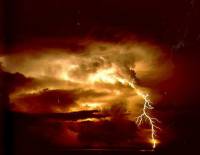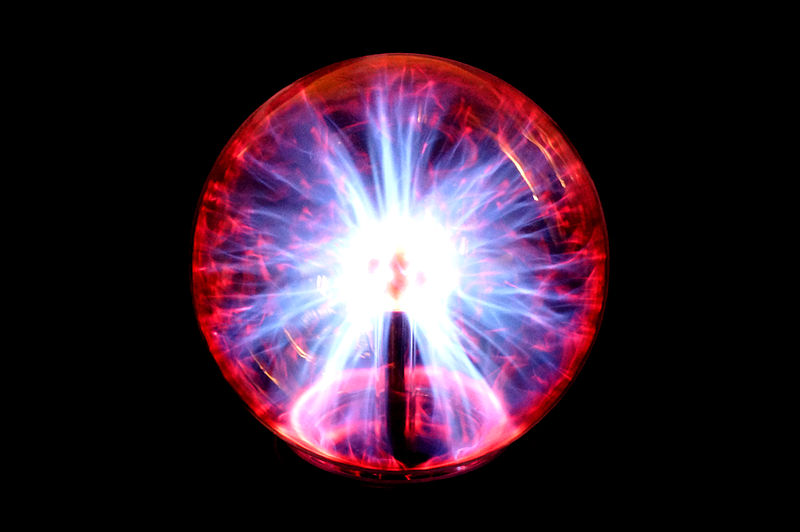Tag Cloud:
User Tools
Sidebar
Table of Contents
Yurian Lattice Plasma
Yurian Lattice Plasma is a rare configuration of plasma (ionized particle gases) that displays interesting properties and has particular utility in plasma-based energy storage applications. It was first described by a team of Ascendancy atmospheric scientists and particle physicists in 2238PT, as part of a study on variations in lightning due to different atmospheric compositions. However, its applications only became clear centuries later thanks to a collaboration between Galactic Energy Supplies and the Commonality. The plasma phase is named after the lead scientist in the collaboration who discovered it for the Ascendancy, Yuri Denisovich of House Ryzhikov. The techniques for transferring it to a plasma storage medium were first released in 2610PT, and although the process initially required highly specialised equipment. The process has been refined over time to now be practical enough to do in the field with fairly common equipment, as well as a trained operator familiar with the unique properties of this plasma configuration.
Composition
As with most plasmas, it is composed of atomic nuclei floating in a “sea” of loose electrons. Unlike most plasmas, the nuclei are arranged in a rough body-centred tetragonal lattice pattern, which tends to hold relatively steady despite the high energy of the system. Individual lattice planes can shear apart if the phase energy is high enough, allowing lattice blocks to rotate within the overall structure. These loose blocks tend to lock back into the overall lattice structure when they rotate back into alignment. Most interestingly, Yurian Lattice Plasma maintains the plasma phase even at low system energy levels. Nuclei locked in the “Yurian Lattice” pattern are generally those of smaller elements, particularly iron, gallium, phosphorus, oxygen and boron. The individual nuclei vibrate furiously in place, but maintain their position in the lattice.

Formation
It is not currently known precisely how Yurian Lattice Plasma stabilises in nature, but it is generally found temporarily occupying areas with a strong magnetic field, usually in the lower atmosphere of planets with a rotating liquid metal core. It is thought to require the complex interaction between a magnetic field, atmospheric gases and nearby resonant metalliferous minerals. The current natural formation hypothesis is when a plasma, formed by lightning or similar striking a mineral-rich deposit, loses energy to the environment while in a strong magnetic field. During its cooling, a lattice forms as an elevated “trough” state, which stabilised the plasma and allows it to retain energy for much longer than normal.
Decay
Outside of vacuum-sealed magnetic containment, the lattice does decay from the outside in due to interaction with non-ionized particles in the environment. A lattice exposed to atmosphere will typically last a few hours at most, although this period can be extended by the maintenance of the magnetic field that produced the lattice in the first place.
If captured in vacuum bound by a magnetic field, Yurian Lattice Plasma can persist almost indefinitely. This aspect, combined with its effect on electromagnetic energy storage systems, is what makes this rare substance so useful.
Applications
Many high-energy storage systems such as charge packs currently hold power in the form of energetic plasmas. Yurian Lattice Plasma is able to retain usable power at much lower energy states than ordinary plasmas without dissapating. When an energetic plasma energy strage system is filled with Yurian Lattice Plasma, the stabilising effect of the lattice allows it to hold far more usable energy than would normally be possible.
Unfortunately, charging plasma energy storage systems with the energy that they require does introduce instabilities in the lattice. This causes the lattice to break apart into normal plasma and eventually decay, but the effect can still hold for many standard hours.
Filling an energy storage system while maintaining the lattice structure is a specialised task, and should not be performed by personnel who are unfamiliar with exotic particle states - the parameters of the containing magnetic fields must be dynamically adjusted during the transfer process, otherwise the lattice is liable to catastophically collapse.
OOC Game Information
Yurian Lattice Plasma is a type of Exotic Particle - an Exotic Substance related to Etheric Science. A physrep of some kind of energy containment device can be used to represent up to 10 measures of this substance, but particularly large physreps can hold more.
A measure of Yurian Lattice Plasma can be applied to any lammied device that holds Charges - weapons, science devices, charge packs or similar. Applying a measure of this substance to such a device will double the number of charges it can hold for 1 day. Yurian Lattice Plasma cannot normally be applied to Artefacts, even if they have Charges.
As with all Exotic Substances, a character with at least 1 rank in the relevant speciality (Etheric Science in this case) can spend 1 minute of appropriate roleplaying to apply 1 measure of Yurian Lattice Plasme to an item. After this roleplaying, they should unpeel the sticker that represents this substance, stick it to the lammie of the item being powered-up, and record the current date on it.
The boost provided by this substance wears off at time-in the following day. If the boosted item is holding Charges beyond its normal capacity when this happens then those Charges are lost and should be torn or handed to a Referee.

